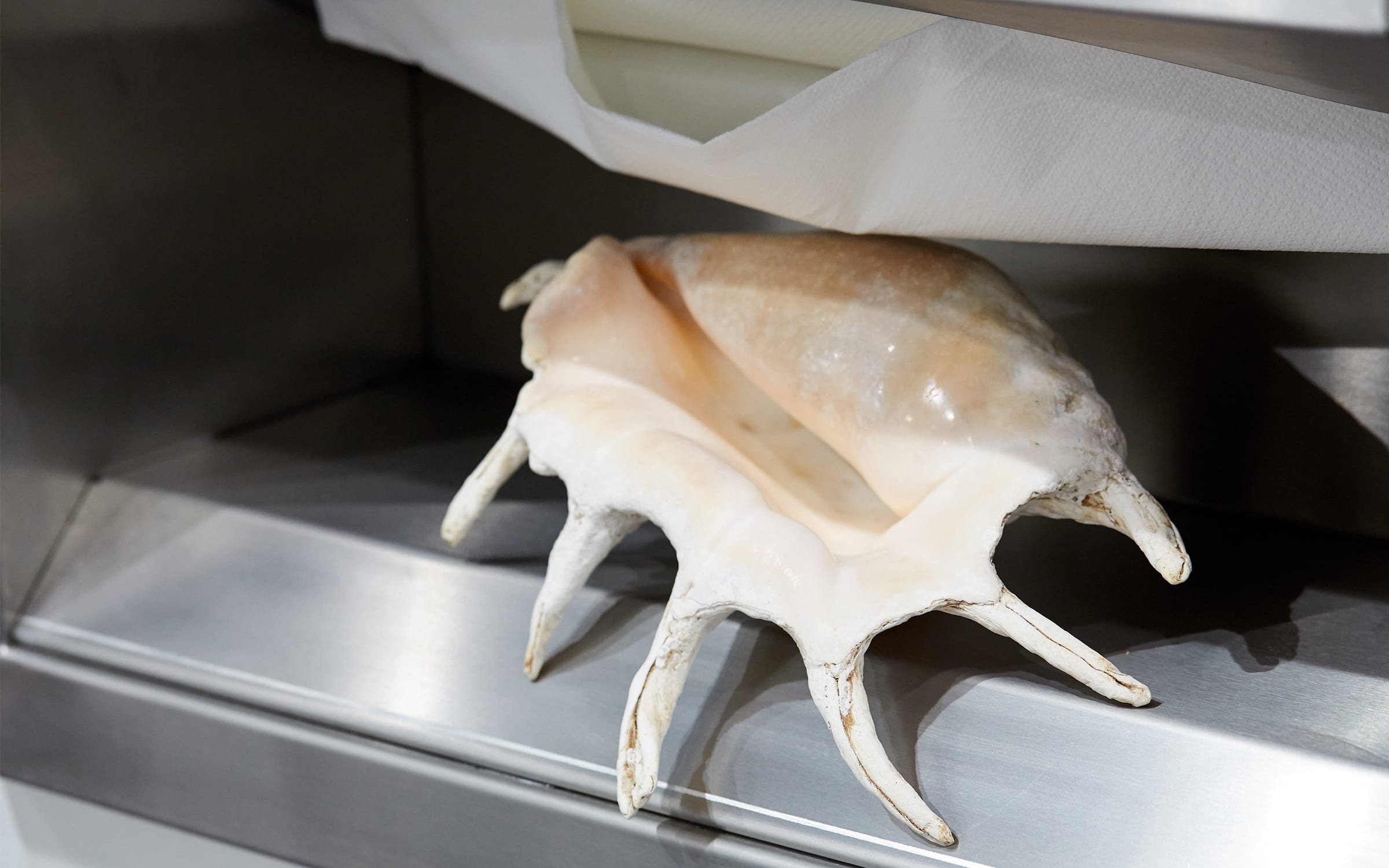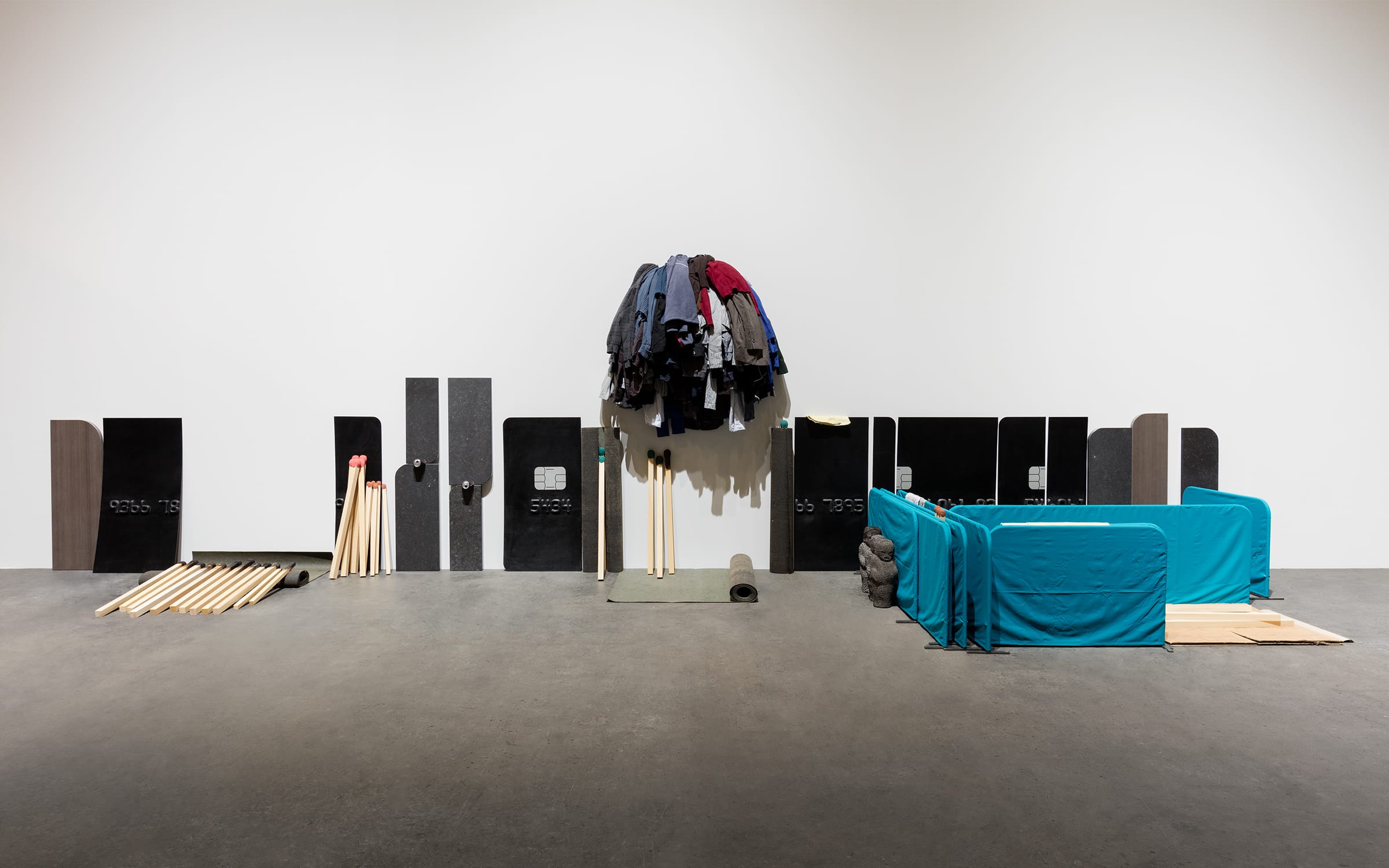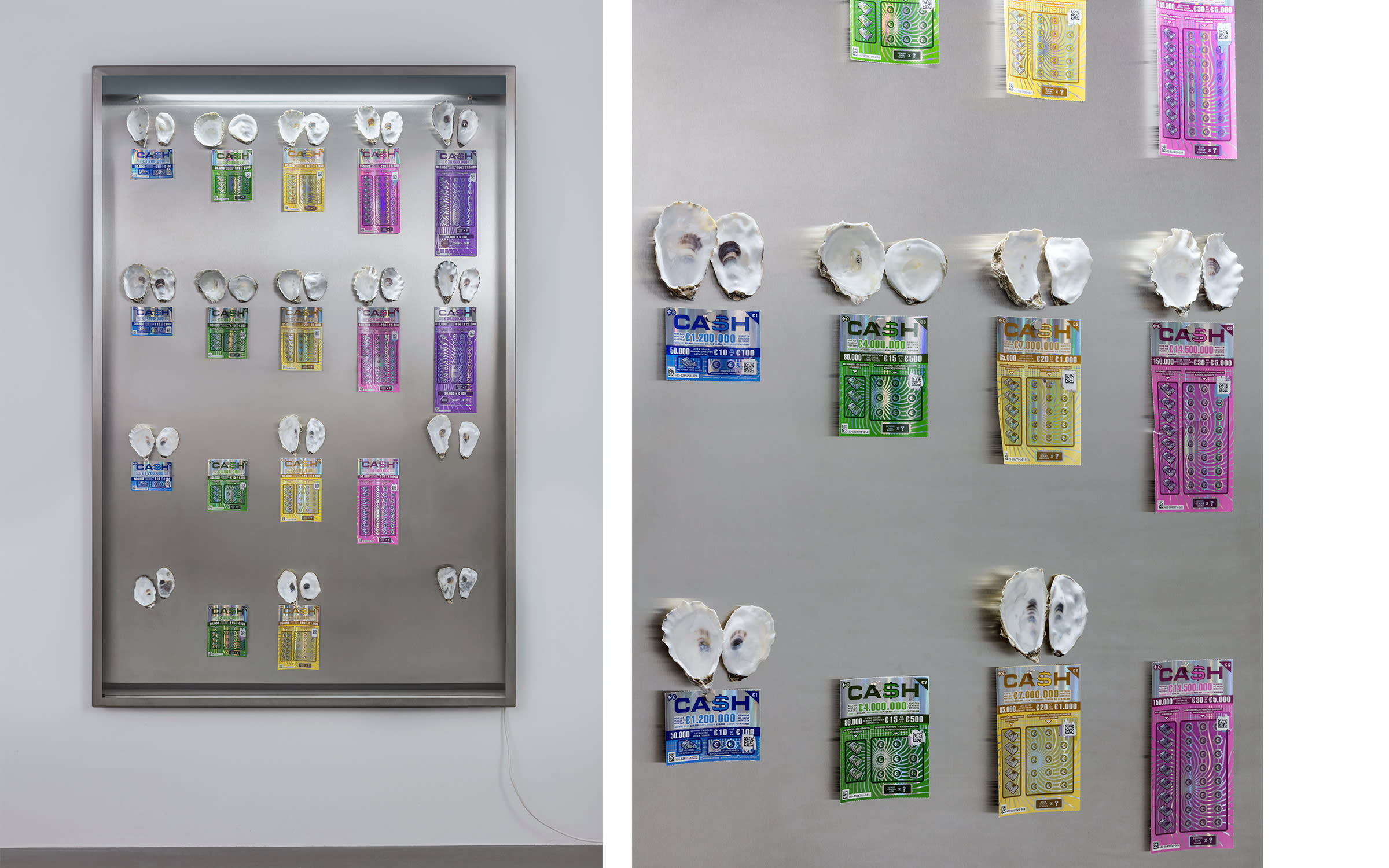How I became an artist: Gabriel Kuri
Ahead of his major solo show at WIELS, the Mexican artist reflects on trash, value, and learning from the YBAs
Log in and subscribe to receive Art Basel Stories directly in your inbox.
‘One of the first important moments in my becoming an artist goes back to when I was nine years old and I met Gabriel Orozco through a family connection. Later, when I was 16, Damian Ortega, Dr. Lakra, Abraham Cruzvillegas, and I formed a group that met every Friday at Gabriel’s house. We talked constantly about each other’s work and what it meant to be an artist. Gabriel rejected the idea that he was a teacher, but it was clear that we were learning from him. We still meet whenever we can and remain very open to critique from one another. Of course we wanted to be artists and to have success, but it wasn’t a sensible aspiration. We never assumed we would exhibit. At that point I was making paintings with words. I have always been interested in semantics and how meaning is conveyed. It was a sign of the times, too: the mid- to late 1980s. It was only later, when I left Mexico, that I veered towards sculpture and a more material approach to art.

‘Liam Gillick was teaching the B.A. course and organized a very dynamic lecture series with artists like John Baldessari, Richard Hamilton, and the YBAs. We met in the corridors of the school and became friends, collaborating on a project called ‘Everyday Holiday’(1996) at Le Magazine in Grenoble soon after college. It was a series of scenarios and celebrations that used the space as a stage, such as the day of the astronaut or skateboarding day. There were some really absurd ones, like red day, which people could interpret however they wanted.

‘Before Contingency After the Fact’ (2011), an exhibition created for the South London Gallery (part of which, Shelter, was shown at Art Basel in 2017), was a big breakthrough for me. It was probably the project I researched most thoroughly. The effects of the 2008 financial meltdown were very tangible at the time. It was also an exhibition in which the idea of changes of scale really came alive. Certain existing objects – like my actual credit card, fresh or consumed matches, and pie charts found on printed matter – were blown up and became oversized. I cannot say exactly why this happened, and it didn’t happen with every source I used. Maybe one reason is the fact that I wanted certain real-life events that had already been abstracted into figures or charts and geometric shapes to come back to the tangible and three dimensional. In terms of what informed this exhibition, there were shifts from reality to abstraction, as in phenomena to data, and data tangibly affecting life and back again, so I wanted to join this circular motion. Somewhere in this back-and-forth motion from tangible reality to abstraction, changes of scale became necessary. It was a reaction to things I saw happening in the world, but at no moment did I try to speak for anyone aside from myself.
‘I’m currently working on ‘sorted, resorted’, [a large-scale exhibition in Brussels at the WIELS centre for contemporary art], where I’ve lived for the past 16 years. It is also a place where I have no exhibition history, so this will also be my introduction here. Rather than using chronology or narrative, I want to immerse the spectator in the way I work. The show is centered on material: plastic, paper, metal, and construction materials. It’s inspired by the way we recycle. We thought: if we were to throw away the works, how would they be sorted in different recycling bags on different days? [Within these groupings, works] include three felt data cards, giant computer data cards, where ordering principles are very visible. Untitled (scratch lotto oysters) (2019) assembles oyster shells and lottery tickets. I played Lotto and made enough money to buy oysters, then categorized everything. .)(., (2013) is a more primal sculptural work which includes a dumpster and formally resembles two punctuation marks in balance.

‘My practice is all about understanding the greater picture, who I am in the larger scheme of things, and how things work in the real world. I do that with form and material, and with an intellectually rigorous approach. I like to think of myself as someone who can work under any circumstances, but I don’t work with anything and everything. I try to be strict about what I focus on. I’m not out to invent fantastical scenarios. I don’t think my life is more extraordinary than anyone else’s. I hope people will bring to it their own projections, dreams, and thoughts.’
Skye Sherwin is an art writer based in Rochester, UK. She contributes regularly to The Guardian and numerous art publications.
Gabriel Kuri is represented by Esther Schipper, Berlin, kurimanzutto, Mexico City and New York, Franco Noero, Turin, and Sadie Coles HQ, London.
Top image: Gabriel Kuri, Table of metals 25 to 4, 2013 (detail). Courtesy the artist and Esther Schipper, Berlin. Photo © Gabriel Kuri.

